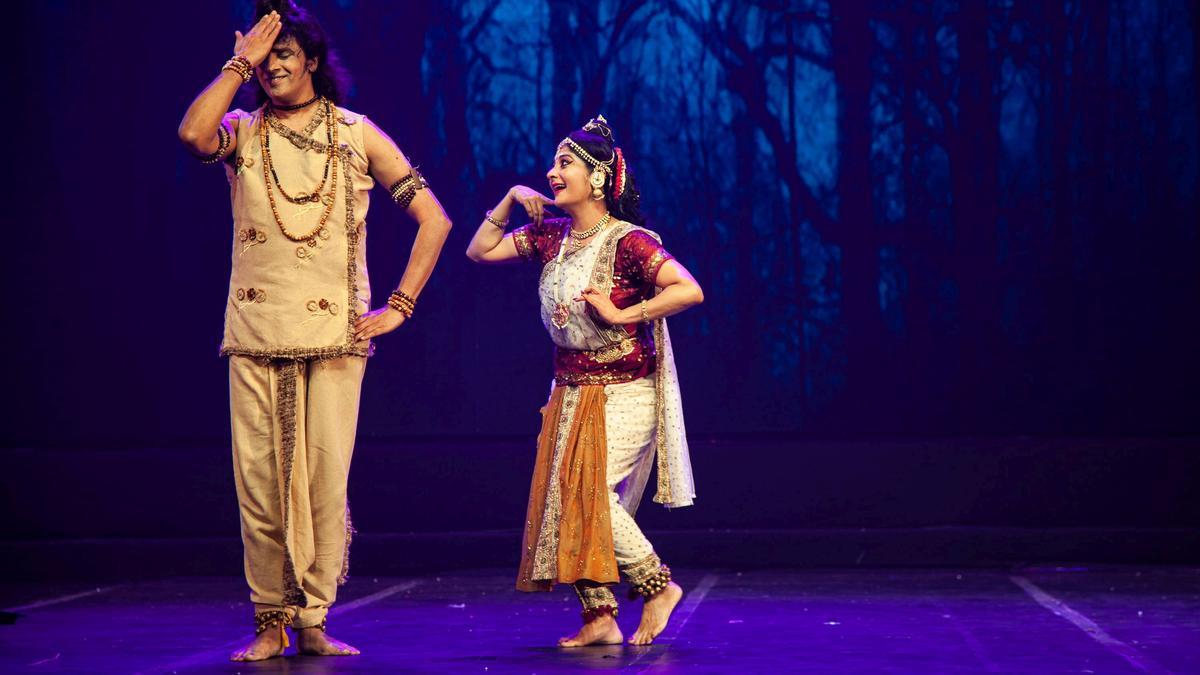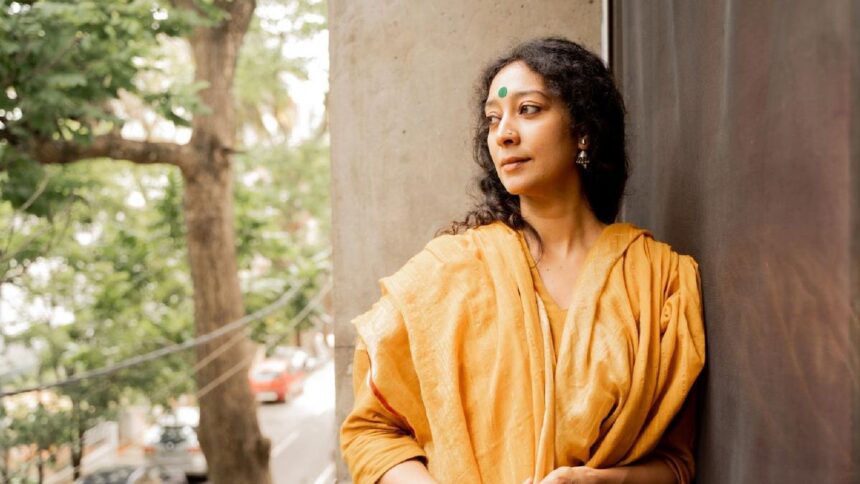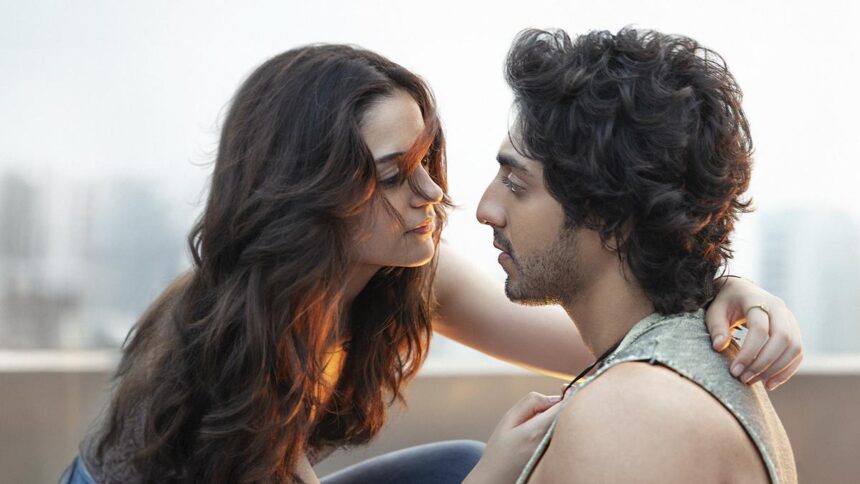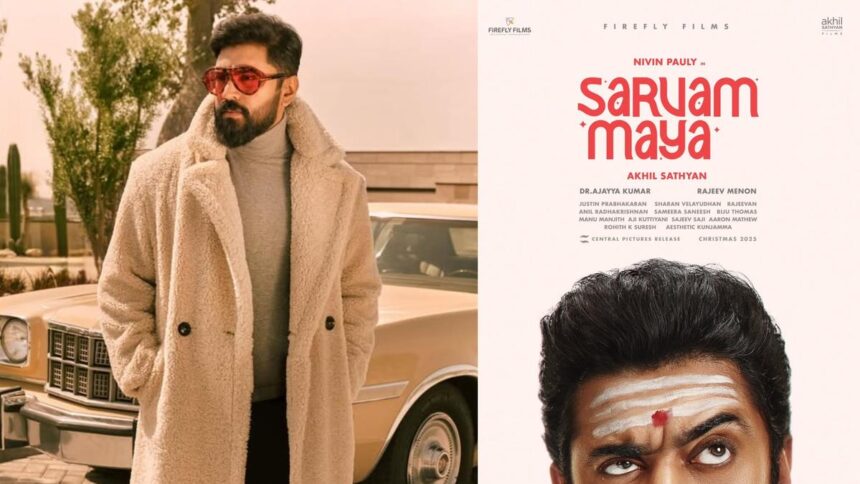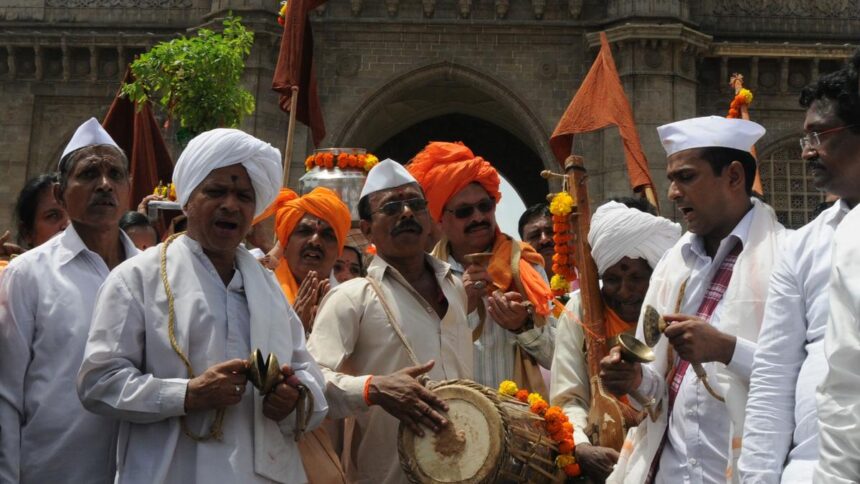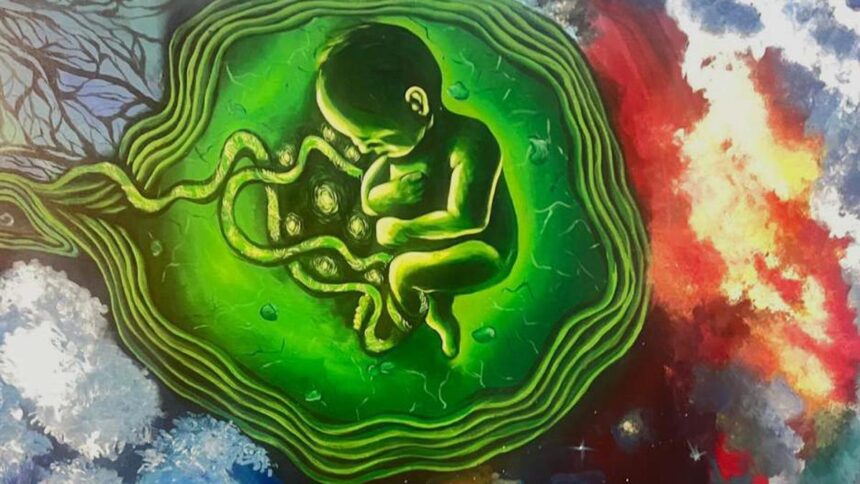
From the thematic production ‘Rama Katha Vismaya’ presented by Nirupama and Rajendra in Bengaluru, recently.
| Photo Credit: Special Arrangement
The Ramayana has been retold through various art forms. Classical dancers, in particular, have been inspired to interpret the epic in their own unique way. Hence, in recent times, we have come across many engaging works based on the Ramayana. The latest is from Bengaluru-based dancer-couple Nirupama and Rajendra, whose production ‘Rama Katha Vismaya’ was staged recently at Chowdiah Hall in Bengaluru. It featured nearly 60 artistes from their Abhinava Dance Company.
The duo presented the epic as a tale being narrated to Krishna by Yashoda as a bedtime story. When she reaches the sequence where Ravana abducts Sita, little Krishna suddenly leaps out of his bed and shouts, ‘Saumitri, bring my bow and arrow’, leaving Yashoda both startled and confused. . According to Nirupama, this moment, drawn from Leela Sukar’s Krishna Karnamritam, where Krishna recalls his past life as Rama, inspired them to come up with this production.
Colourful costumes (by Rajendra), vibrant lighting design (by Ajay Vijendra), choreography that incorporates diverse styles, musical score ranging from classical to folk, and grand sets and LED projections added to the appeal.
The presentation began with a group of girls wielding peacock feather fans and a group of boys holding bows and arrows, highlighting the common link between Rama and Krishna. Their dynamic formations and movements for this segment, leading to the introduction of Rama, were skillfully choreographed. A brief depiction of Rama’s previous avatars by Rajendra was interesting. And Nirupama explored her dramatic skills with conviction in her role as Soorpanakha.
At one corner of the stage, Yashoda continued narrating the story to Krishna. She tells him about how Rama and Lakshmana vanquish the rakshasas, the breaking of Shiva danush by Rama followed by Sita Swayamvaram, Rama, Lakshmana and Sita going into Dandakaranya forest, the appearance of Soorpanakha, Maricha (the golden deer), and finally the abduction of Sita.
Some of the episodes were visualised well. For instance, in the Sita abduction scene, the depiction of Ravana’s duality was done convincingly. Ravana is usually portrayed as arriving disguised as a sage seeking alms, only to disappear and reemerge in his majestic, form. But, here, the variation was creatively presented by two dancers as they appeared on stage and moved in perfect unison to convey the idea that the two persons were, in fact, one and the same.
,
The introduction of Ravana was riveting. In utter darkness, glowing masks (used to indicate the ten faces of Ravana) began to swirl across the stage, before gradually settling into a formation behind the dancer — the embodiment of Ravana, the ten-headed king.
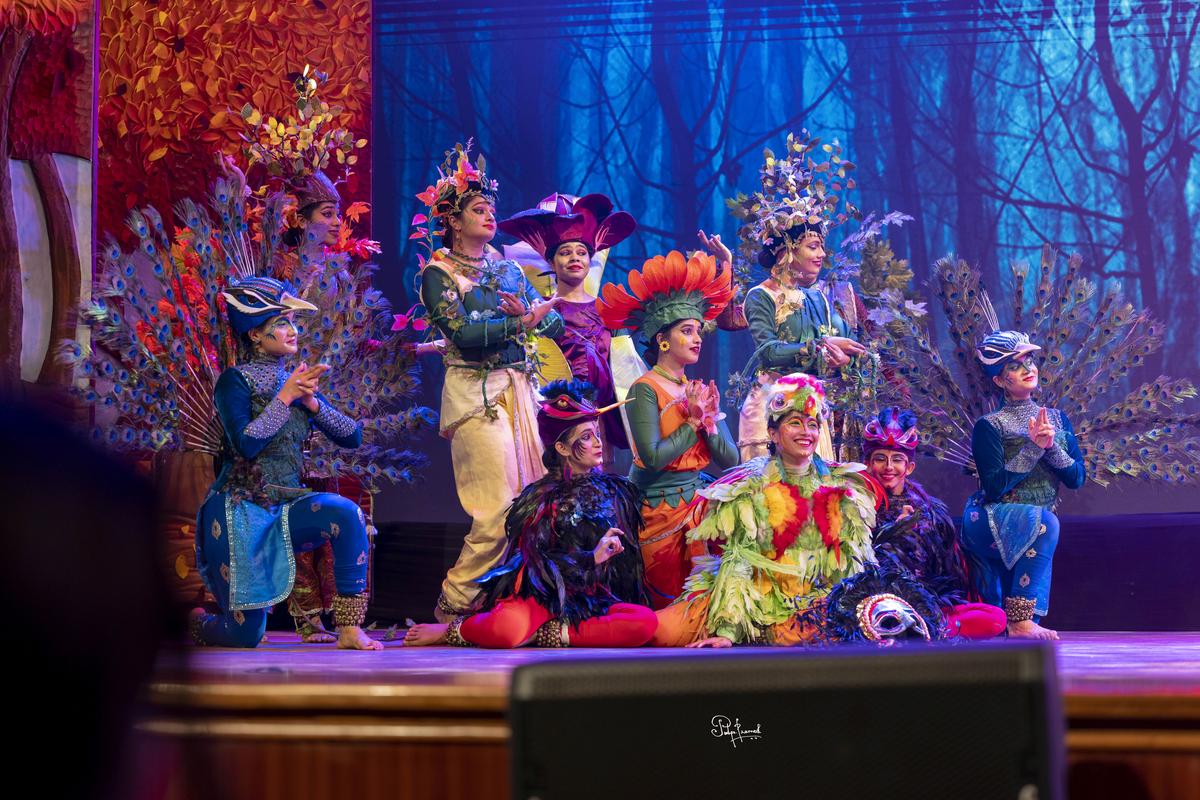
In ‘Rama Katha Vismaya’ a group dancers, dressed as flowers and birds, represented the Dandakaranya forest.
| Photo Credit:
Special Arrangement
Even the scene about Rama’s exile was dealt with differently. Instead of the usual depiction of the sadness that engulfs the people of Ayodhya when Rama leaves, the dancers showcased the happiness and reverance with which Dandakaranya forest welcomes them. However, a group of dancers, dressed as flowers, trees, birds and animals, constantly moving on stage was disturbing.
The production aimed to include elements that would enhance the appeal, but the core of Rama’s character and the narrative were lost amid a flurry of activity on stage. Some moments of repose could have significantly elevated the impact.
Lyrics were by Shatavadhani R. Ganesh. Music was by Praveen D Rao, who had combined varied sounds and swara patterns to suit the match the high-on-energy choreography. Sometimes a leisurely pace would help the audience connect with the emotions in the story better. Direction and visuals were by Vinod Gowda, and artistic direction and choreography were by Nirupama and Rajendra.
Published – June 03, 2025 06:21 pm IST








